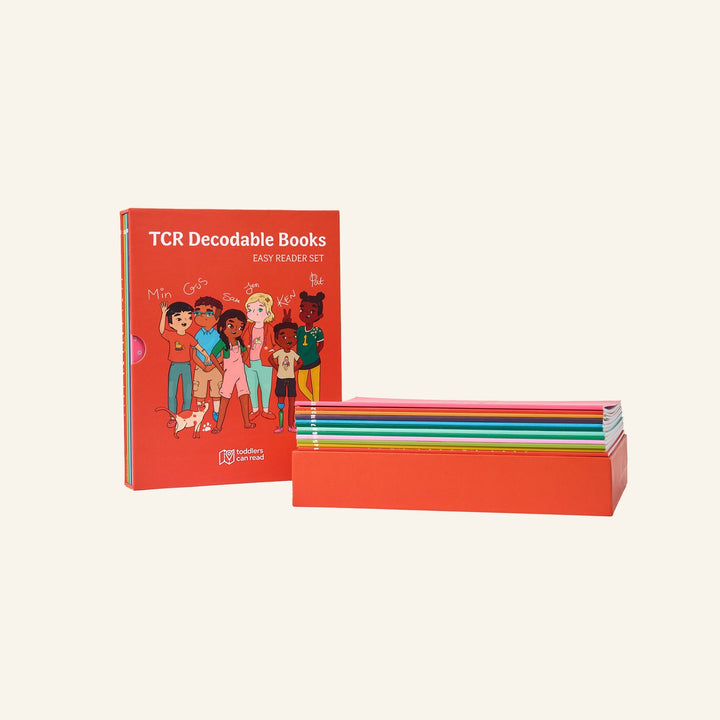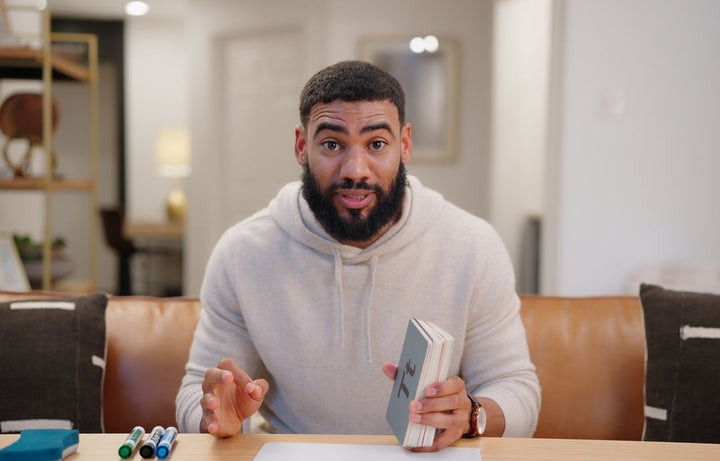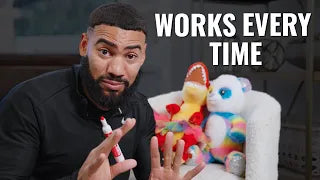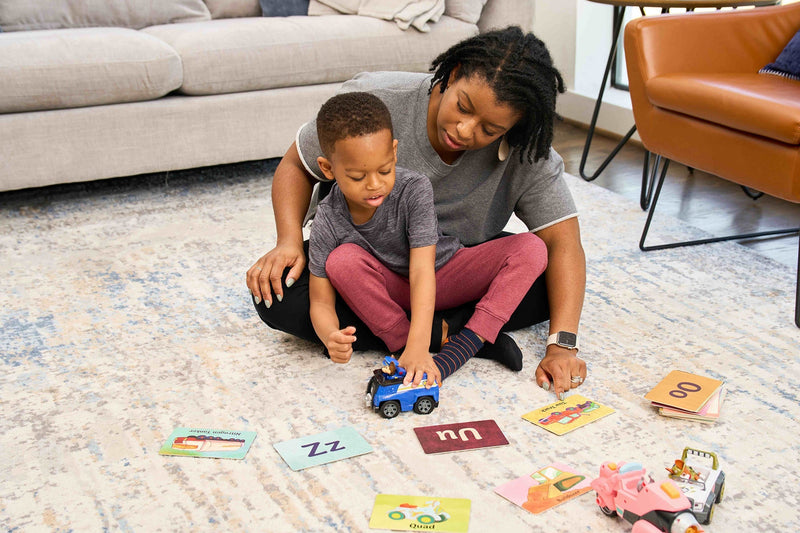When their kids start school, many parents are surprised to find out that reading requires a set of skills that has to be intentionally taught. And among educators, there's quite a lot of debate about how to teach those skills.
My answer to "What works best?" is generally "Whatever works best for YOUR kid." But based on my experience as a classroom teacher and trainer for other teachers—and because of my interactions with thousands of parents through Toddlers Can Read—I can say with confidence that most kids learn to read faster and better when they're taught using phonics.
I recently sat down with Drew Perkins, host of the ThoughtStretchers Education Podcast to talk about why that is.
What is Phonics?
The English language is like a code that uses symbols (letters) to represent sounds. Phonics teaches readers which letters represent which sounds.
Part of a phonics approach includes developing phonemic awareness: how to break words down into their basic sounds, how to blend sounds, and how to create new words by switching out or deleting sounds.
Memorization v. Phonics
You may have seen videos on social media of kids flying through sight word flashcards. It seems impressive—but more often than not, those kids aren't reading the words. They've memorized them.
Relying exclusively on memorization in reading education is a problem because the English language has hundreds of thousands of words. It's simply not possible to memorize them all!
Through phonics, kids learn the skills they need to decode (sound out) words, which means they can read words they've never seen before.
Context Clues v. Phonics
I receive messages every day from adults who never learned to read.
Their friends, families, and coworkers think they can read. But they're actually just good at using workarounds. They memorize words they most often need on the job. They order last at a restaurant to avoid the menu and pull an "I'll have what they're having." Or they try to puzzle together what they're trying to read by using context clues: images, familiar words, and their experience.
Much like memorization, this is not actually reading. Do they get by? Sometimes. Is it nerve-wracking and humiliating? Often.
Like you, I want kids to read with confidence. When they learn to read with phonics, they don't have to guess what a word is based on the corresponding picture. Instead, they can sound out the word and know they've got it right.
Whole Language and Balanced Literacy v. Phonics
For decades, schools relied on the Whole Language approach to early reading instruction, which assumes when kids are read to they'll automatically pick up phonics skills.
But researchers studying the Science of Reading determined that's simply not true because that's not how our brain is wired.
Knowing how to read wasn't important back when we spent most of our days hunting for food and running from lions. So the parts of our brain responsible for reading developed relatively recently, which means reading skills must be intentionally taught.
So in the 1990s, thanks to Science of Reading research, a new approach finally overtook Whole Language: Balanced Literacy.
Most schools employ Balanced Literacy, and on the surface, it sounds good: a mix of phonics with both teacher-led instruction and independent learning. But given that most kids aren't reading proficiently by the fourth grade, it's clear that Balanced Literacy isn't working any better than Whole Language.
What does work, according to more recent Science of Reading discoveries, is Structured Literacy—which is rooted primarily in phonics.
Self-Directed Learning v. Phonics
There's a small population of people driving a large narrative that all kids learn to read eventually if we just read to them enough, expose them to books, and let them read on their own.
That's beautiful. But in practice, it's not effective.
Instead, "all kids learn to read eventually" is a myth perpetuated largely by folks with many, many resources who can support their kids if and when they fall behind. It's not an approach being embraced by people who are traditionally underserved by the educational system: black, brown, and Hispanic folks; folks with low income, and folks in rural areas.
Phonics is an intentional, systematic approach to early literacy that gives all kids the best chance of learning to read proficiently.
Fun v. Phonics
Some educators criticize approaches like Structured Literacy because the related methods and resources are boring.
I don't disagree.
Intentional phonics instruction tends to be rote and repetitive. Most decodable texts (books with words kids can sound out) have a limited vocabulary and exactly zero plot. And the resources that kids find more interesting involve significant screen time.
But fun and phonics instruction don't have to be mutually exclusive, and you definitely don't have to use screens to teach your kid to read.
As an educator, I have a deep belief that no topic is inherently interesting or boring. It's more about the way things are delivered. And I can show you how to teach your little one to read and have fun at the same time.
- Answer a few simple questions to find out where to start your kid's reading journey.
- Learn the basics for FREE in my on-demand workshop.
Discover just how easy it is to teach your child to read—even if you're not a stronger reader yourself!









